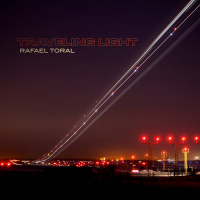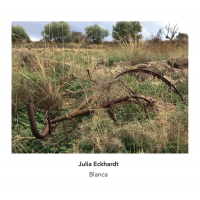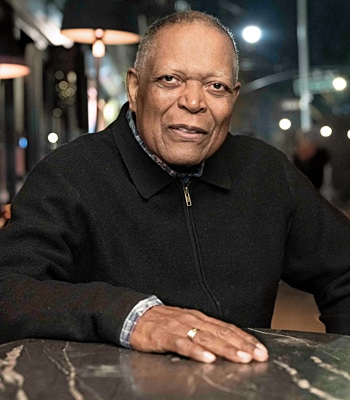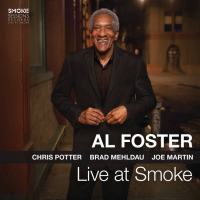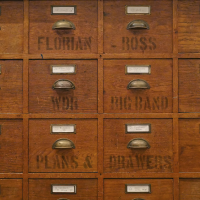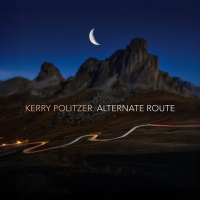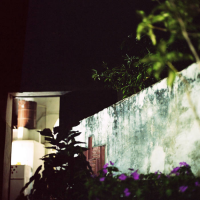Home » Jazz Articles » Album Review » Rafael Toral: Traveling Light
Rafael Toral: Traveling Light
This is not levied as criticism, only as observation. Ultimately, the ubiquity of the standard in modern recordings does not expose some sickness in the genre's output, but the language frequently used to describe them hints at an existential anxiety. What does one do with jazz in 2025? The heyday was not so long ago, yet the playing field could not be more different between the present and the past. When Coleman Hawkins took on the little-played standard "Body and Soul" in 1939, transforming an unremarkable showtune into a loping, melancholic masterpiece, the recording represented an almost unanimous shift into the self-reflexive and highly emotional bop era known today. But when an artist tackles the same tune now, what then? It is difficult to imagine an artistic landscape where a similar revolution would be possible. What sort of revelations can listeners expect from a form that does not purport to be new?
Ambient musician and field recordist Rafael Toral provides a left-field counterpoint to these concerns in his first jazz standards album, an album that appears both on the outskirts of his usual modes and the one it nominally occupies. Every track is comprised of an oblique panoply of guitar feedback loops, the soft rustlings of birds and squirrels, and humming visitations from modern mainstays like Rodrigo Amado, Jose Bruno Parrinha, Clara Saleiro and Yaw Tembe with a particularly ghastly flugelhorn interlude.
Toral's choice in compositions is apt, a collection of late '50s and early '60s ballads, mainstays from Miles Davis' cool era and Grant Green's Blue Note sessions. "Easy Living" begins as a swooning, nocturnal reflection of earlier recordings, and quickly delves into thornier territory as the piece progresses. The instrumentation sheds harmonic intonation for a pure, organ-like texture, the improvisations slowly manifesting in the natural elements, the original melody pleasantly lost in a sea of indifferent percolations. The composition rears its head not in the body of the music, but in submissive strums, hymns and squawks, that just barely note a key change or the beginning of a bridge.
The human guests are composed similarly. One would expect in a mostly electronic record the analog instruments would offer some grounding in the conventional rhythm, but they do just the opposite, acting as visitors to these foreign worlds, but no less foreign to the audience as well. Amado plays with a savory baritone, a rural scratchiness found in aged farmhands and ominous summer nights. There are certain tracks, such as "My Funny Valentine," where listeners can only guess at the origin of the accompaniment. Is the canted drone soaring across the bubbling strums a flute or a clarinet? On "God Bless the Child," though certain troughs reveal the identity of Parrinha's clarinet, for a majority of the tune, it is deep and rollicking enough to be a bassoon!
"Body and Soul" is where Toral truly plays his hand, his philosophy revealed. Similar to the first two melodies, the track is unexpectedly faithful in the beginning, perhaps even more so than Hawkins' rendition. Saleiro's flute jabs and picks at the strums, but otherwise, the first minute would not be uncommon in a particularly adventurous 1960s record. Then, there is a shift, barely perceptible until it settles, where the formulation dips into the atmospheric, but the melody is not betrayed. Lurking under the tonal oscillations, it wanders, explores new passages on its own terms. By the seventh minute, the track becomes beatific, a layering of long, drawling crescendos. Listening back to Hawkins' original recording—and the two are wildly different—his quick-tongued monologues are of a similar trajectory to Toral's computations. Neither deny the melody its due diligence, but personify it. They give the song legs, a pair of eyes, ears, a forest of forking paths. They encourage the melody to explore, dawdle, get lost, waste time if it must, only to keep moving from where it started, and eventually find a new direction to stammer along.
Track Listing
Easy Living; Solitude; Body and Soul; You Don't Know What Love Is; My Funny Valentine; God Bless the Child.
Personnel
Rafael Toral
electronicsJosé Bruno Parrinha
clarinetRodrigo Amado
saxophone, tenorYaw Tembe
flugelhornClara Saleiro
fluteAlbum information
Title: Traveling Light | Year Released: 2025 | Record Label: Drag City
Tags
PREVIOUS / NEXT
Support All About Jazz
 All About Jazz has been a pillar of jazz since 1995, championing it as an art form and, more importantly, supporting the musicians who make it. Our enduring commitment has made "AAJ" one of the most culturally important websites of its kind, read by hundreds of thousands of fans, musicians and industry figures every month.
All About Jazz has been a pillar of jazz since 1995, championing it as an art form and, more importantly, supporting the musicians who make it. Our enduring commitment has made "AAJ" one of the most culturally important websites of its kind, read by hundreds of thousands of fans, musicians and industry figures every month.


